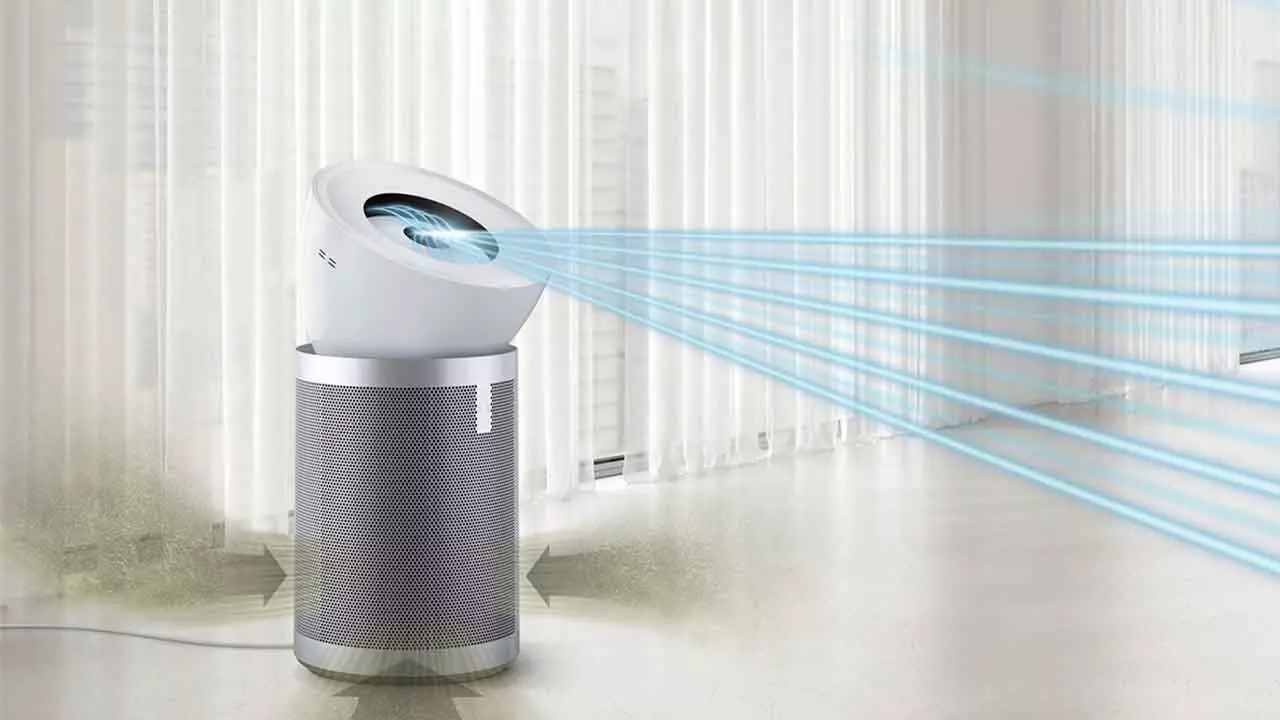Cold wave grips Delhi: Steps to maintain Indoor AQI with the rise in winter pollution

A recently released study by Arizona's Barrow Neurological Institute claims there is a 56 percent higher risk of developing Parkinson's disease due to air pollution . Another study by Oxford found that children and adolescents exposed to air pollution at critical stages in their mental development put them at risk of possible mental health problems later in life like depression, anxiety, dementia and schizophrenia to name a few . These are concerning reports as seven of the top 10 most polluted cities in the world are in India .
With both the temperature and air quality dipping, we tend to spend more time indoors. But, are we safe from the harmful pollutants inside our home?
We can see that the AQI outside is extremely high and the first solution we think of is to stay indoors. When sealing our windows and doors, it may seem like we’re shutting pollution out. But in truth, we’re shutting it in. Not only the outdoor pollutants such as vehicle exhaust fumes, pollen and mould spores, enter our indoor spaces, but there are various sources from inside our homes which can react with outdoor pollutants, creating a complex cocktail of dirty air. Indoor pollution can be up to 10 times worse than outdoor air pollution .
Senior Design Engineer, Sam Railton says, “By spending more time indoors during the colder months, our day-to-day activities increase the level of indoor pollutants – from cooking and cleaning, to using personal care products like deodorant.”
Fortunately, there are a number of ways to help improve your personal air quality exposure. Dyson suggests the steps you can take to maintain the indoor AQI for a healthy home.
- Reducing pollution sources such as aerosol sprays and candles within your home is a good start, as well as adapting your routines to include fewer polluting activities. When cooking with frying oil, make sure to use suitable ventilation, or a purifier or open a window if the outdoor air pollution is suitable but also be careful of letting fresh air in as it could be an entryway for outdoor pollutants.
- Don’t wait for the he dust to settle. Dust mites thrive in dark, warm, and humid places where skin cell debris is high, like sofas and beds – those spaces in which we spend many hours getting comfy. Everyday activities like using central heating can disturb microscopic dust, resulting in airborne particles that contribute to pollution levels in the home. Regularly vacuuming soft furnishings can help reduce the allergens in your home.
- Using a purifier is another way to control your indoor air quality. Dyson’s latest air purifiers offer full-machine HEPA filtration, ensuring that what goes inside, stays inside.
The need to invest in an Air purifier
Investing in an air purifier is one of the most effective ways to remove a wide range of pollutants from the air. You should look at the following technologies and features while buying an air purifier:
- Advanced filtration technologies, such as HEPA filters and carbon filters: These filters can remove a wide range of other pollutants from the air, including dust, pollen, pet dander, smoke, and VOCs. Dyson’s latest machines offer full-machine HEPA filtration- ensuring that what goes inside, stays inside. The formaldehyde sensing and cooling airflow maintain air quality within your home all year round.
- Ability to remove fine and ultra-fine particles: While PM2.5 is the commonly mentioned particle size – which is prevalent in India, particles unfortunately, do not stop at 2.5 microns. PM0.1 particles, also known as ultra-fine particles, tend to penetrate the fine sacs in our lungs (also known as alveoli) and may even enter our bloodstream easily. Dyson’s latest purifiers capture 99.95 per cent of particles as small as 0.1 microns and achieve fully-sealed HEPA 13 standard filtration – ensuring that no air bypasses the filter and blocking any potential leak points through which dirty air might enter the machines.
- Area of coverage and ability to circulate air: To gauge the scale of your needs, measure the approximate length, width and height of your room, and multiply them together to obtain the amount of coverage you require. Dyson recently launched its latest air purification technology - The Dyson Purifier Big+Quiet, designed to purify the air in spaces as large as 1000 sq.ft. It uses Cone Aerodynamics to deliver 10-meter projection. Alongside powerful projection, the it is also engineered to operate quietly, producing just 56 decibels of noise - making it Dyson’s quietest yet most powerful purifier.
With the rising AQI, it is crucial to be mindful of the potential impact of indoor air pollution on our health. By taking steps to reduce our exposure to common household pollutants, you can improve indoor air quality and protect your health, especially at this time when air pollution levels tend to be higher.














